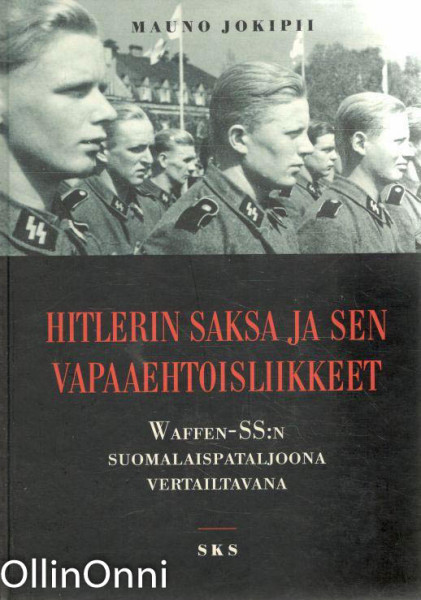
This Finnish unit ”The Battalion Boys” received basic training in Vienna and Stralsund, as well as combat training in the Gross-Born Training Center in East Pomerania. Finally, on 13 September 1941, the battalion was named ’FINNISCHES FREIWILLIGEN BATAILLON DER WAFFEN-SS’. The battalion was formally established on Jand commanded by SS-Hauptsturmführer (Captain) Hans Collani. The majority of the volunteers, about 800 men, were assembled into a Finnish training battalion called “SS-FREIWILLIGEN BATAILLON NORDOST”. When the winter came, the fighting calmed down and the position lines were established along the Mius River in Ukraine. During the summer and autumn of 1941, these Finnish “Men of the Division” took part in battles on the southern part of the German eastern front. After a short training period, they were divided into small groups mainly within the Wiking Division’s Nordland, Westland and Germania Regiments, departing to the eastern front.

After attacking the Soviet Union on June 22, 1941, Germany had already gained about 400 men from the Finnish-Soviet Winter War. In Germany, Finnish volunteers were divided into two groups. That was the case with the Finns as well. Moreover, the integration of the Finnish Battalion into the Wehrmacht was not possible because all the soldiers recruited as volunteers in the German army were joined to the Waffen SS in accordance with the practice of that era. However, within the Wehrmacht already served a battalion, formed by the Germans, who cherished the traditions of the Royal Prussian Jaeger Battalion 27. In addition, the battalion was hoped to join the ranks of the German field army, the Wehrmacht. When recruiting the battalion, the Finns expressed the wish that it could nurture the traditions of the Royal Prussian Jaeger Battalion 27 (WW 1), after all they were recruited in the way of second-generation jaegers, among others several sons of original Finnish WW 1 jaegers were in the unit. Eventually, 1197 volunteers who were selected were shipped to Germany in five batches during May-June 1941. Those recruited were screened carefully, aiming for a proper but non-political military unit. In different parts of Finland, there were provincial recruiters that were looking for suitable volunteers and delivered them to Helsinki to be examined by German doctors. Recruiting was handled through a Helsinki-based Engineer Office, Ratas, under the supervision of ministerial councilor Esko Rieki and police authorities. Since Finland was impartial at the time, recruiting was to be carried out in secret. Recruiting of volunteers began in the spring of 1941. The Finnish government gave its consent to the project on 14 April 1941. On March 10, 1941, the idea of recruiting a Finnish battalion to the German army was presented by the German authorities. transportation of German troops through Finnish territory to northern Norway.

Military and political co-operation started, and Finland allowed eg. On the other hand, a public benefit, whether it be spiritual, economic or technological, is generally expected from the progress of science.The relations between Finland and Germany began to warm up again after the Winter War in 1940. On the whole, the Scandinavian scene has been characterized by strong ties between the public power and by a certain pragmatic convergence of interests. The centralization of the state, the relative lateness of industrialization and a lack of great accumul ation of wealth may have contributed to this ideological and social stability. New scientific waves like the Darwinism have been rather readily accepted even by the churcnes, and they have not lead to very widespread conflicts. Extremist thoughts has seldom gained much ground.

This has often lead to a critical kind of acceptance right from the beginnig. The grand tides of European thinking have reached Scandinavia from outside and only been modified in the cultural and historical environments. Ever since, a critical thinking has been characteristic for Scandinavian research, in humanities as well as in scineces.

It gained more ground during the 18th century, when several Scandinavians already played an active part in the international progress of science. The awakening of critical thought was in Scandinavia postponed, compared with the leading centres of Europe. During this period the Scandinavian countires were culturally very much in the periphery of Europe.


 0 kommentar(er)
0 kommentar(er)
